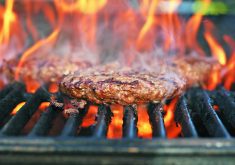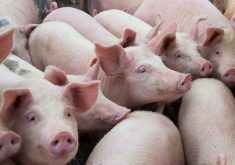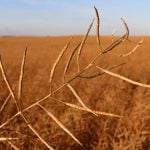 The traditional feast in cattle country includes a large roast of beef, slowly cooked and carefully carved. It is juicy, aromatic, flavourful, succulent and representative of the quality that prairie folk expect from their beef.
The traditional feast in cattle country includes a large roast of beef, slowly cooked and carefully carved. It is juicy, aromatic, flavourful, succulent and representative of the quality that prairie folk expect from their beef.
Often served at the end of the buffet line, people can choose their portion size and their preferred level of doneness.
Read Also

Crop profitability looks grim in new outlook
With grain prices depressed, returns per acre are looking dismal on all the major crops with some significantly worse than others.
But what of the European or the urbanite unfamiliar with the large roasts that cook so beautifully and tenderly? When these folks buy a roast, they’re looking for manageable size and economical purchase, as we know intuitively and as we recently heard confirmed at the Calfenomics workshop held in Claresholm, Alta., earlier this week.
Wayne and Judy Lucas have a ranch vacation operation near Claresholm and they welcome many European guests and city dwellers unfamiliar with the ranching lifestyle and with the glory of Alberta or Saskatchewan beef.
And as they said earlier this week at the workshop, many of their guests enjoy the beef served by the Lucases so much that they vow to eat more of it when they return home.
So what happens when these people go out and buy a 2.5 pound roast, which can quickly turn into dry meat at best and shoe leather at worst? Large roasts can be easier to cook than small ones, and have the saving graces of the aforementioned levels of doneness and juiciness.
Well, not every European or city dweller is a ham-handed cook, even if they are unfamiliar with beef roasts. So hopefully their newfound liking for beef survives the cooking of smaller cuts.
The point of the conversation in Claresholm was whether beef carcasses are getting too big, forcing meat cutters to fabricate smaller cuts of meat from larger cuts. And if they do that, what effect does it have on quality?
Wayne Lucas said producers don’t seem to be producing what consumers want, namely smaller, tasty beef cuts.
There is a lot of work being done in this area, through research into genetic markers for tenderness, to branded beef programs that aim for tender and tasty beef, to better animal handling that contributes to a fine end product.
But the question of optimum carcass size remains. It’s something to think about.














